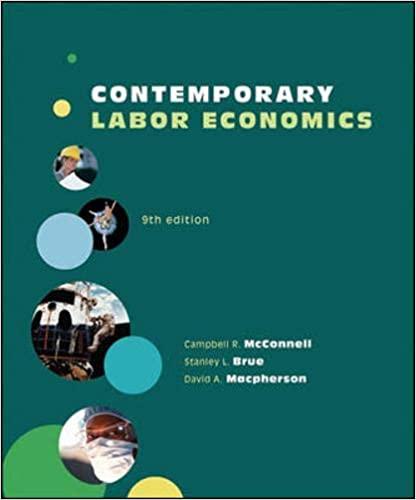Consider the following time series data. Quarter Year 1 Year 2 Year 3 1 2 5 5 7 2 0 2 6 3 5 8 10 4 5 CO 10 (b) Use a multiple regression model with dummy variables as follows to develop an equation to account for seasonal effects in the data: Qtri = 1 if Quarter 2,0 otherwise; Qtr2 = 1 if Quarter 2,0 otherwise; Qtr3 = 1 if Quarter 3, 0 otherwise, If required, round your answers to three decimal places. For subtractive or negative numbers use a minus sign even if there is a + sign before the blank (Example: -300). If the constant is "1" it must be entered in the box. Do not round intermediate calculation 9 = -1.000 Qtri + -3.000 Qtr2+ -2.000 Qtr3 6.667 (c) Compute the quarterly forecasts for next year based on the model you developed in part (b). If required, round your answers to three decimal places. Do not round Intermediate calculation F Year Quarter 4 1 5.667 4 2 3.667 3 4 4.667 4 6.667 (d) Use a multiple regression model to develop an equation to account for trend and seasonal effects in the data. Use the dummy variables you developed in part (6) to capture seasonal effects and create a varlable t such that t = 1 for Quarter 1 in Year 1, = 2 for Quarter 2 In Year 1 t = 12 for Quarter 4 in Year 3. If required, round your answers to three decimal places. For subtractive or negative numbers use a minus sign even if there is a + sign before the blank (Example: -300). V = 3.417 0.219 Qtri + -2.188 Qtr2+ -1.594 Qtr3 + 0.406 (e) Compute the quarterly forecasts for next year based on the model you developed in part (d). Do not round your Interim computations and round your final answer to three decimal places. Year Quarter Period Fu 4 1 13 3.823 4 2. 3.635 4 3 15 1.229 4 . 4 16 3.417 (1) Calculate the MSE for the regression models developed in parts (b) and (d), If required, round your intermediate calculations and final answer to three decimal places. Model developed in part (b) Model developed in part (d) MSE 22.667 1.542 Consider the following time series data. Quarter Year 1 Year 2 Year 3 1 2 5 5 7 2 0 2 6 3 5 8 10 4 5 CO 10 (b) Use a multiple regression model with dummy variables as follows to develop an equation to account for seasonal effects in the data: Qtri = 1 if Quarter 2,0 otherwise; Qtr2 = 1 if Quarter 2,0 otherwise; Qtr3 = 1 if Quarter 3, 0 otherwise, If required, round your answers to three decimal places. For subtractive or negative numbers use a minus sign even if there is a + sign before the blank (Example: -300). If the constant is "1" it must be entered in the box. Do not round intermediate calculation 9 = -1.000 Qtri + -3.000 Qtr2+ -2.000 Qtr3 6.667 (c) Compute the quarterly forecasts for next year based on the model you developed in part (b). If required, round your answers to three decimal places. Do not round Intermediate calculation F Year Quarter 4 1 5.667 4 2 3.667 3 4 4.667 4 6.667 (d) Use a multiple regression model to develop an equation to account for trend and seasonal effects in the data. Use the dummy variables you developed in part (6) to capture seasonal effects and create a varlable t such that t = 1 for Quarter 1 in Year 1, = 2 for Quarter 2 In Year 1 t = 12 for Quarter 4 in Year 3. If required, round your answers to three decimal places. For subtractive or negative numbers use a minus sign even if there is a + sign before the blank (Example: -300). V = 3.417 0.219 Qtri + -2.188 Qtr2+ -1.594 Qtr3 + 0.406 (e) Compute the quarterly forecasts for next year based on the model you developed in part (d). Do not round your Interim computations and round your final answer to three decimal places. Year Quarter Period Fu 4 1 13 3.823 4 2. 3.635 4 3 15 1.229 4 . 4 16 3.417 (1) Calculate the MSE for the regression models developed in parts (b) and (d), If required, round your intermediate calculations and final answer to three decimal places. Model developed in part (b) Model developed in part (d) MSE 22.667 1.542










